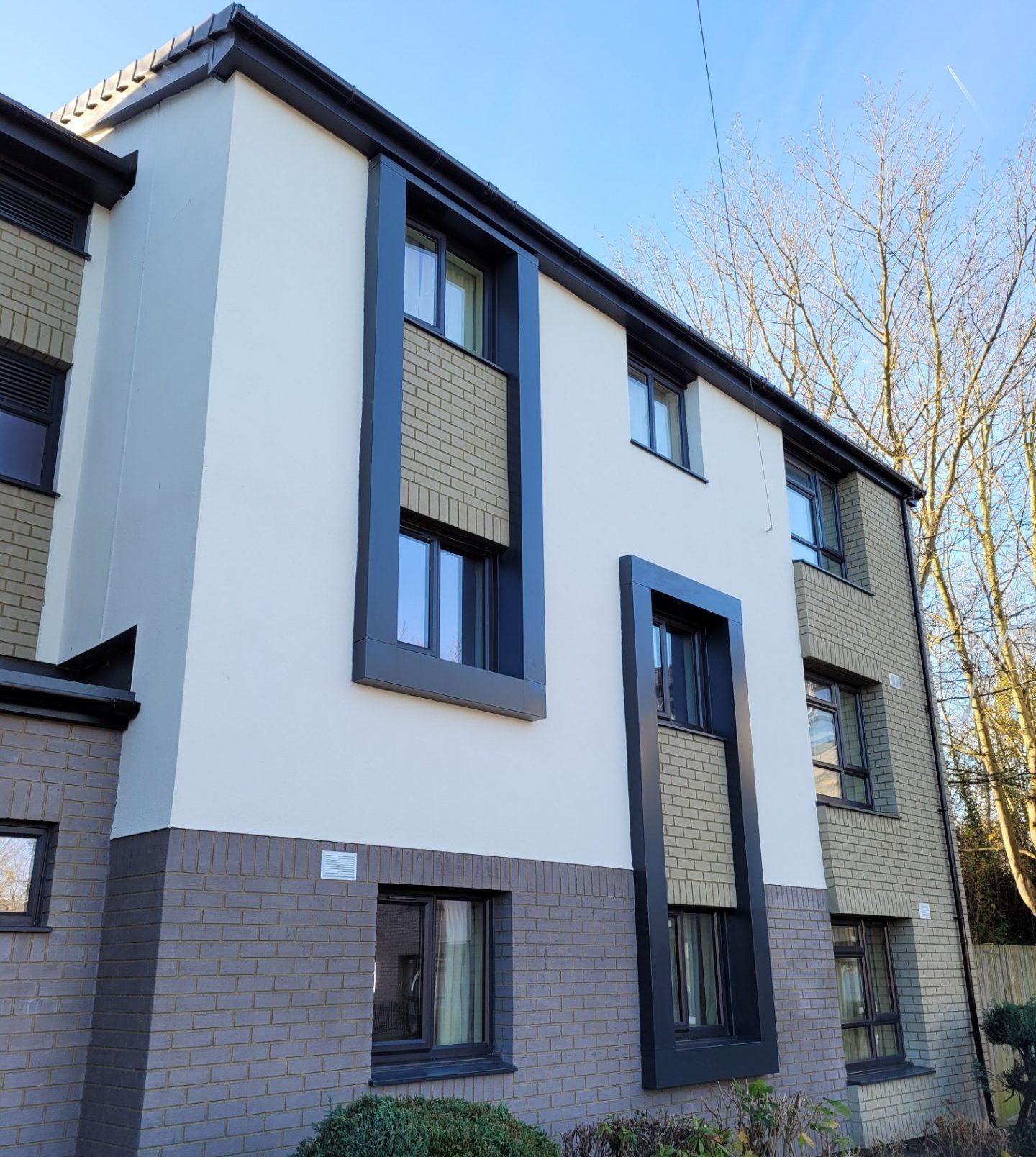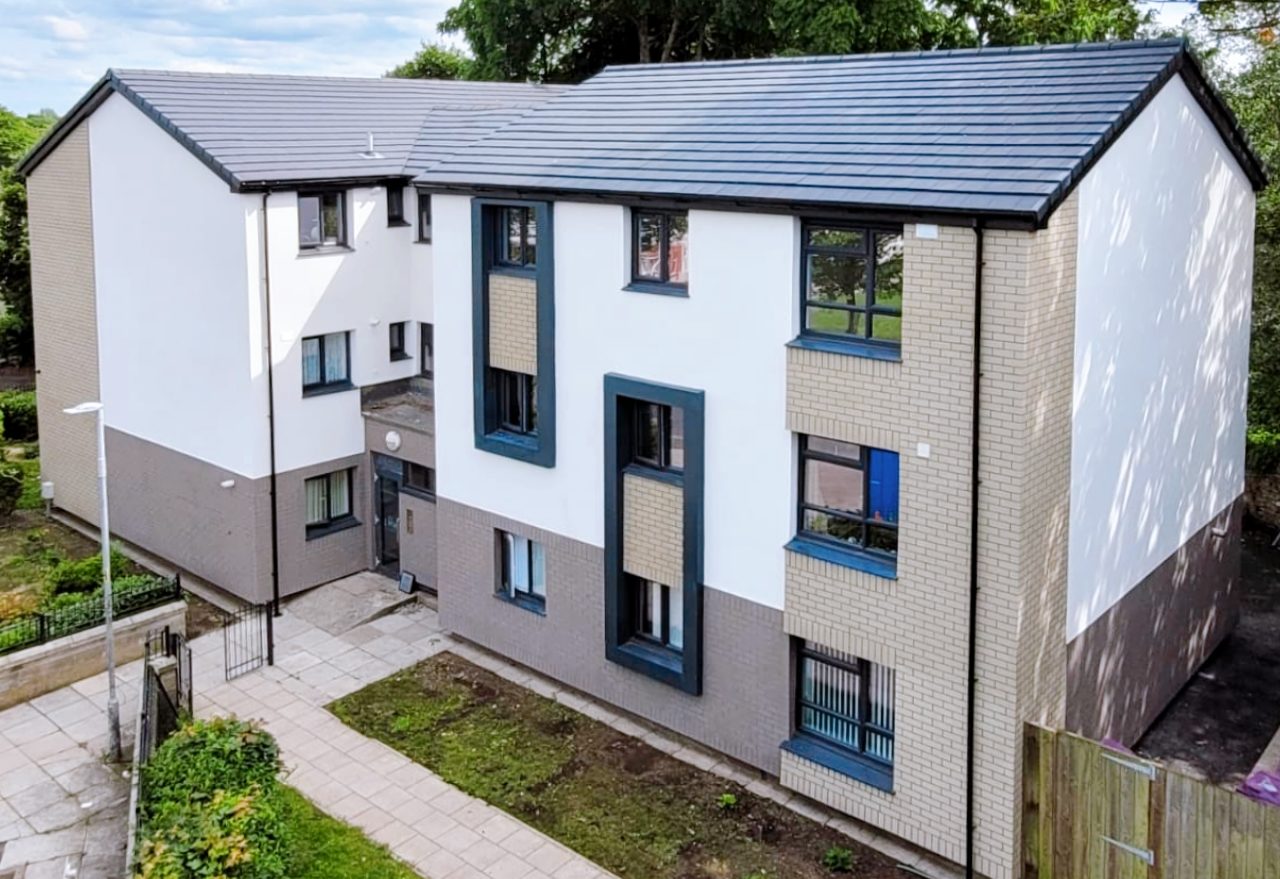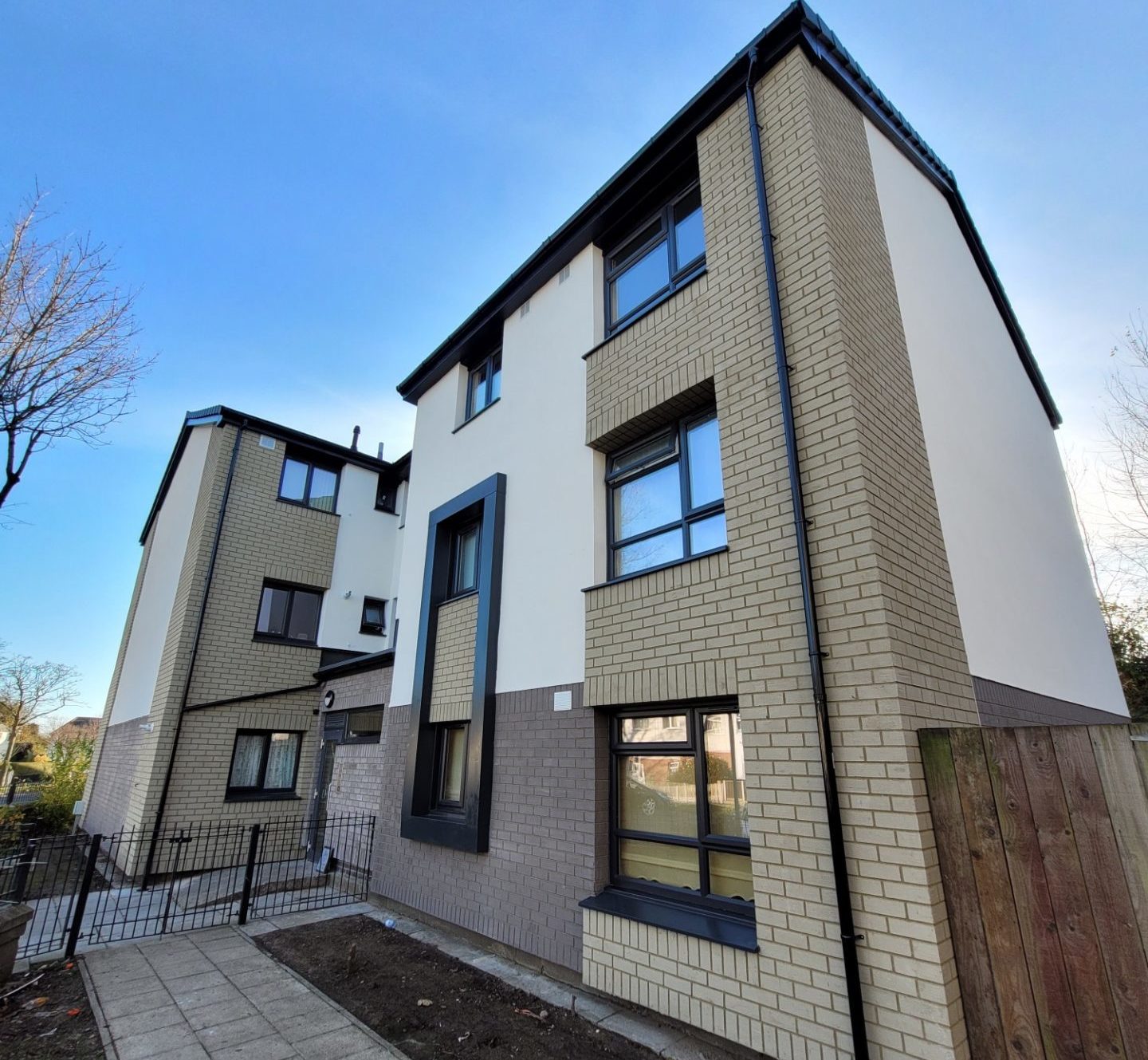INCA Case Study: Cherry Lane, Anfield, Liverpool
Cherry Lane, Anfield
 Project Type: Refurbishment
Project Type: Refurbishment
Building Type: Residential, Low Rise
Architect: N/A
Installer: Ecogee
System Designer: Wetherby Building Systems Ltd
System & Finish: Wetherby A Rated System
U-value Achieved: 0.3 to 0.15 W/m2K
Future project, led by Sefton Council. Both main contractor and installer Ecogee won the European Regional Development Fund (ERDF) External Envelope contract set up to retrospectively install low carbon solutions to homes to ensure they are future proof.
Wetherby Building Systems Ltd were specified for the EWI as a leading manufacturer and also local trusted supplier to the project. Wetherby were able to provide secure deliveries which mitigated long travel during Covid restrictions for delivery drivers.
Wetherby Building Systems – Insulated Thin Coat Render system & Brick Effect Render systems were specified to provide a contemporary finish to the brick cavity block substrate, but more importantly to reduce heat from the homes. The Wetherby systems will help residents save money on their fuel bills, which has never been more important right now, with many tenants experiencing real hardship because of the pandemic.
The client required an A rated system with a minimum u-value of 0.30, requesting
various thicknesses of Stone Wool insulation (40mm, 50mm, 100mm, 120mm, 130mm, 170mm, 180mm, 220mm, 230mm) to create interesting detailing between the silicone render, brick effect render and external cladding. ROCKWOOL Stone Wool insulation is a semi-rigid insulation board that is A1 non-combustible and fire resistant, and will not develop any significant toxic smoke or promote flame spread, even when directly exposed to fire.
A Wetherby K+A basecoat was used, along with Wetherby 1.5mm ‘k’ Silicone Render in colour shade 0603 Y40R and Brick Effect Render in colour shades Levenstone, Trawden and Grimsby for the finishes. Wetherby Brick Effect Render is a versatile alternative to traditional brickwork and is ideal for use on projects where traditional new brick-work or brick slips are impractical.
Ecogee had the task of installing various insultation thickness and finishes to create a ‘stepped 3D’ effect, all with reduced labour levels due the pandemic and Covid Safe Operating Practices. Due to the constraints, regular communication with the client was required to deliver this project successfully.
Ecogee also added social value to the project by engaging with Thorn Cross Prison to accommodate two offenders on Day Release, who enrolled for upskilling rehabilitation as they were close to full release. One of which gained full time employment with them.
The Wetherby system installation provided a contemporary attractive finish to the once dated flats. The final u-values ranging between 0.15 and 0.30, with a reduction from 1.92 W/m2K. Due to the use of the Wetherby A Rated systems, the project saving is a tremendous 82.70 tons of co2 per annum with an average of 1.53 tons per property with an anticipated bill savings based on the average 2-bedroom home. Supporting the Liverpool City Region (LCR) goal to become a zero-carbon city region by 2040. The project achieved significant reductions in energy bills for the residents, many of which fall in the affordable warmth category.
Torus Assets Project Manager, David Kelly;
“External Wall Insulation is a fantastic, energy efficiency measure which will help us only reduce carbon but keep rising heating bills in check.”
“By investing £3 million in improving our homes, we can both improve the environment by reducing carbon emissions and protect the people who live in them from increasing high energy bills and fuel poverty, which is especially beneficial for the high proportion of social tenants who are on low incomes.”
“It will also have the bonus of improving the look of the buildings and by keeping the building warm and dry, EWI protects the building’s structure and improves weatherproofing.”
By investing £3 million in improving our homes, we can both improve the environment by reducing carbon emissions and protect the people who live in them from increasing high energy bills and fuel poverty




